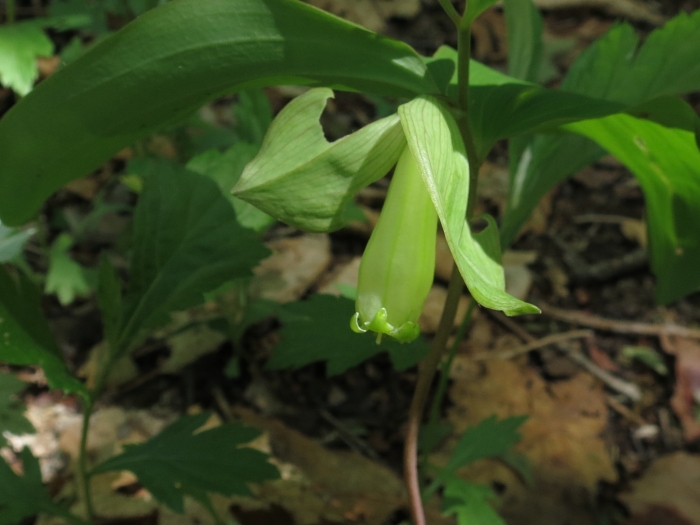King Solomon’s Seal
(Polygonatum involucratum)
King Solomon’s Seal (Polygonatum involucratum)
/
/

Repina Tatyana
CC BY 4.0
Image By:
Repina Tatyana
Recorded By:
Copyright:
CC BY 4.0
Copyright Notice:
Photo by: Repina Tatyana | License Type: CC BY 4.0 | License URL: http://creativecommons.org/licenses/by/4.0/ | Rights Holder: Repina Tatyana | Publisher: iNaturalist | Date Created: 2019-05-28T13:12:11-07:00 |



















Estimated Native Range
Summary
Polygonatum involucratum, commonly known as King Solomon’s Seal, is a deciduous perennial herb native to temperate forests and woodland margins in East Asia, including China, Japan, and Korea. This plant typically reaches a height and width of 1-2 feet (0.3-0.6 meters), featuring arching stems and alternate, ovate leaves. The small, tubular cream flowers dangle beneath the leaves in pairs or whorls and bloom in late spring to early summer, followed by blue-black berries in the fall. The flowers are modest but add a delicate charm to the shaded garden areas.
King Solomon’s Seal is valued for its graceful form and the subtle beauty of its flowers, which are appreciated up close. It is often used in shaded borders, woodland gardens, and naturalized areas. This plant prefers moist, well-drained soil rich in organic matter and thrives in part shade to full shade conditions, mimicking its native understory habitat. While it is low-maintenance, it can be susceptible to slug damage. It is not typically invasive but can form dense colonies over time through rhizomatous spread.CC BY-SA 4.0
King Solomon’s Seal is valued for its graceful form and the subtle beauty of its flowers, which are appreciated up close. It is often used in shaded borders, woodland gardens, and naturalized areas. This plant prefers moist, well-drained soil rich in organic matter and thrives in part shade to full shade conditions, mimicking its native understory habitat. While it is low-maintenance, it can be susceptible to slug damage. It is not typically invasive but can form dense colonies over time through rhizomatous spread.CC BY-SA 4.0
Plant Description
- Plant Type: Herb
- Height: 1-2 feet
- Width: 1-2 feet
- Growth Rate: Moderate
- Flower Color: Cream
- Flowering Season: Spring, Summer
- Leaf Retention: Deciduous
Growth Requirements
- Sun: Full Sun, Part Shade
- Water: Medium
- Drainage: Slow, Medium, Fast
Common Uses
Bee Garden, Bird Garden, Butterfly Garden, Deer Resistant, Edible*Disclaimer: Easyscape's listed plant edibility is for informational use. Always verify the safety and proper identification of any plant before consumption., Hummingbird Garden, Low Maintenance, Rabbit Resistant
Natural Habitat
Temperate forests and woodland margins
Other Names
Common Names: 용둥굴레
Scientific Names: , Polygonatum involucratum, Polygonatum platyphyllum, Polygonatum nakaianum, Periballanthus involucratus, Polygonatum ibukiense, Polygonatum periballanthus, Polygonatum periballanthus var. ibukiense,
GBIF Accepted Name: Polygonatum involucratum (Franch. & Sav.) Maxim.